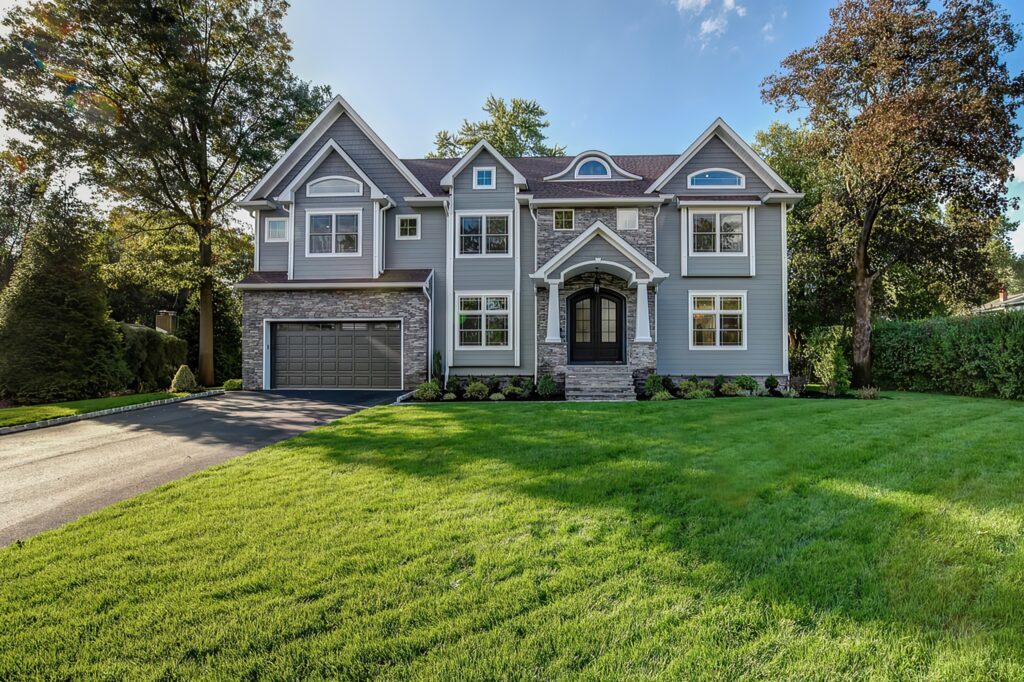You’re in the right place if you’ve been wondering how to paint an old house exterior. Exterior house painting of an older home can be daunting, but it’s also one of the most rewarding home improvement projects you can undertake. A fresh coat of paint can dramatically enhance your home’s curb appeal, protect it from the elements, and increase its value. As an experienced exterior house painter, I’m excited to share my top secrets for successfully painting an old house exterior. These tips will help you achieve a professional finish that lasts for years.
Secret 1: Thorough Preparation is Key
Preparation is crucial before opening a paint can. Proper prep work lays the foundation for a flawless paint job.
Cleaning the Surface
Start by thoroughly cleaning the exterior surfaces. Use a power washer to remove dirt, mold, and loose paint. This step is essential because paint adheres better to clean surfaces. If you skip this step, your paint may peel or blister, and you’ll return to square one.
Scraping and Sanding
After cleaning, inspect your home’s exterior for loose or flaking paint. Scrape off any loose paint using a putty knife or a paint scraper. Sand the edges of the remaining paint to create a smooth transition between the bare wood and the painted areas. Sanding also helps the new paint adhere better.
Repairing Damages
Next, check for any damage, such as rot, cracks, or holes in the siding. Repair these issues with wood filler or epoxy. This not only improves the appearance but also prevents future damage.
Secret 2: Choosing the Right Paint and Tools
Selecting the right paint and tools can make a massive difference in the outcome of your project.
Selecting High-Quality Paint
High-quality paint is worth the investment. Look for exterior paint that offers durability and weather resistance. Acrylic latex paint is popular because it’s flexible, breathable, and easy to clean.
Using Primer
Applying a primer before painting can significantly enhance the durability and appearance of your paint job. Primer helps the paint adhere better and provides a uniform surface. It’s essential if you’re painting over bare wood or making a significant color change.
Essential Tools
Make sure you have the right tools for the job. Quality brushes and rollers can make a significant difference. A paint sprayer can save time and provide a smooth finish for larger areas. Remember safety gear, including gloves, goggles, and a sturdy ladder.
Secret 3: Mastering the Painting Technique
Your technique will determine the outcome even with the best paint and tools.
Applying Paint Evenly
Start from the top and work your way down. This method helps prevent streaks and drips. Use long, smooth strokes with your brush or roller. Using a sprayer, keep the nozzle moving to avoid uneven coverage.
Optimal Painting Conditions
Weather conditions matter. Avoid painting in extreme temperatures or direct sunlight, which can cause the paint to dry too quickly and result in cracks or blistering. The ideal temperature range for exterior house painting is between 50°F and 85°F with low humidity.
Proper Brush Strokes
For detailed areas, use a brush with angled bristles to get into corners and tight spots. Apply paint in thin layers, and allow each coat to dry completely before applying the next. This approach helps you achieve a smooth, professional finish.
Secret 4: Pay Attention to Details
The details make all the difference in a professional-looking paint job.
Painting Trim and Windows
Don’t neglect the trim, windows, and doors. These areas require precision and patience. Use painter’s tape to protect the glass and other surfaces from stray paint. A small, angled brush works best for these detailed areas.
Protecting Non-Painted Surfaces
Cover areas you don’t want to paint with drop cloths and plastic sheeting. This includes landscaping, walkways, and outdoor furniture. Protecting these areas will save you cleanup time later.
Final Touches
Once the main surfaces are painted, take a step back and look for any spots you may have missed. Touch up these areas with a small brush. Attention to these final touches ensures a polished and professional appearance.
Secret 5: Post-Painting Care and Maintenance
Maintaining your freshly painted exterior is crucial to keeping it looking new for years to come.
Regular Cleaning
Periodically wash your home’s exterior to remove dirt and mildew. A garden hose and a mild detergent work well for this task. Regular cleaning prevents buildup that can deteriorate the paint.
Inspecting for Damage
Regular inspections are essential. Look for signs of wear or damage, such as cracks, peeling, or fading paint. Address these issues promptly to prevent further damage.
Touch-Up Paint
Keep some leftover paint for touch-ups. Small nicks and scratches can be easily fixed with a quick touch-up. This practice maintains a fresh look and extends the life of your paint job.
How to Paint an Old House Exterior for Lasting Results
Learning to paint an old house exterior involves meticulous preparation, choosing suitable materials, mastering your painting technique, paying attention to details, and committing to post-painting maintenance. Each of these steps is crucial for achieving a durable and beautiful finish.
Discover the captivating transformation Gemstar Contractors can bring to your home’s exterior. As the leading exterior house painting company serving Madison, Chatham, Morristown, NJ, and nearby areas, we breathe new life into your home with vibrant strokes and meticulous attention to detail, enhancing curb appeal in every way. Rely on us to seamlessly blend your vision with our expertise, crafting elegant, enduring exteriors that withstand the test of time. Experience the artistry of residential painting with Gemstar Contractors, where exceptional service and your dream home come together.
By following these secrets, you’ll improve your home’s appearance and protect it from the elements for years to come. Ready to transform your home? Let’s get started! Call us at (973) 543-7556 for a FREE estimate.


